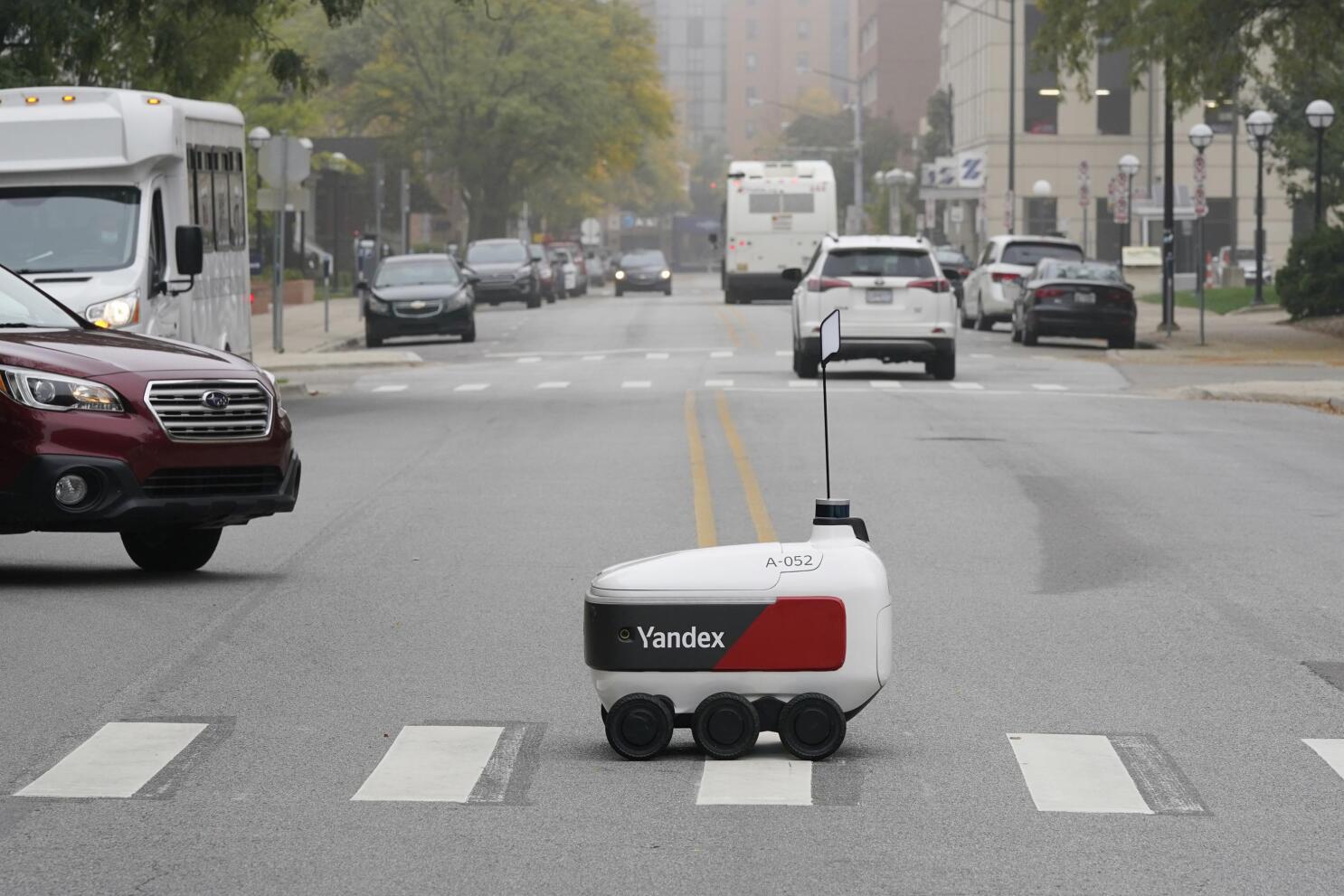Introduction to the rise of robots in delivery services
Imagine a world where your pizza arrives at your door without the need for a delivery driver. Instead, it’s brought to you by a friendly little robot on wheels. This isn’t just science fiction; it’s happening right now. The rise of robots in delivery services is transforming how we think about convenience and speed.
From groceries to restaurant meals, these delivery robots are quickly becoming our new best buddies in the pursuit of instant gratification. As technology advances, companies are racing to implement robotic systems that can navigate sidewalks and streets with ease. Get ready to explore this fascinating trend as we dive into the advantages and challenges of using these innovative machines for delivering everything from food to everyday essentials!
Advantages of using robots for delivery
Robots are revolutionizing the delivery landscape. They offer speed and efficiency that traditional methods often can’t match.
One significant advantage is cost-effectiveness. Businesses save on labor costs, allowing them to pass savings onto consumers. This makes robot delivery services appealing for both companies and customers.
Additionally, these robots operate around the clock. No more waiting for business hours or late-night cravings going unfulfilled. A pizza can be at your doorstep whenever you want it.
Safety is another benefit; robots minimize human error in deliveries, reducing accidents associated with traffic and mishandling of items.
Moreover, they contribute to sustainability efforts by optimizing routes to decrease fuel consumption and carbon emissions.
With their precise navigation systems, delivery robots can efficiently traverse urban environments while avoiding obstacles seamlessly. The convenience they bring enhances customer satisfaction significantly as well.
Examples of companies implementing robot delivery systems (eg. Starship Technologies)
Several companies are leading the charge in robot delivery systems. Starship Technologies is a notable name, deploying small autonomous robots for local deliveries. These little machines navigate sidewalks and cross streets to bring food and groceries right to your door.
Another company making waves is Nuro. Their larger self-driving vehicles focus on transporting goods rather than people. They’ve partnered with major retailers like Kroger, allowing customers to enjoy grocery deliveries without human intervention.
Postmates has also entered the scene with its Serve robots, designed specifically for delivering food within urban areas. These eye-catching bots have already begun their work in select cities, showcasing how delivery robots can enhance convenience.
The innovation doesn’t stop there; Amazon continues to explore various robotic solutions that could transform last-mile logistics as we know it. Each of these examples highlights a growing trend toward automation in our everyday lives, reshaping the way we think about delivery services.
Challenges and limitations of using robots for delivery
Despite the excitement surrounding robots delivering food, challenges persist.
Navigating complex urban environments is no small feat for these machines. Sidewalks and streets are often unpredictable, filled with pedestrians, pets, and other obstacles.
Weather can be another hurdle. Rain or snow can affect a robot’s ability to operate efficiently, making delivery times inconsistent.
Then there’s security. Robots risk vandalism or theft when left unattended on doorsteps or sidewalks.
Technical limitations also play a role. Current sensors may struggle to recognize certain objects or navigate around unexpected barriers effectively.
Regulatory hurdles exist in many regions. Local laws haven’t fully caught up with this technology which complicates deployment and scaling operations across different areas.
Potential impact on job market and economy
The rise of delivery robots sparks a conversation about the job market. While these automated systems offer efficiency, they also raise concerns over employment for traditional delivery drivers.
Many fear that as robots become more prevalent in urban areas, jobs may dwindle. Entire sectors could face disruption as businesses look to cut labor costs and increase profit margins.
However, there’s another side to the story. New technologies often create new roles too. Think about positions in robot maintenance, programming, and customer support tailored specifically for these innovative services.
Economically speaking, widespread adoption of delivery robots might lead to lower prices for consumers due to reduced operational costs. This shift could enhance spending in other areas of the economy.
It’s essential to balance innovation with workforce needs while considering how society adapts during this transition period. The future landscape will depend on how both businesses and workers navigate these changes together.
Future possibilities and advancements in robot delivery technology
The future of robot delivery technology is brimming with potential. As artificial intelligence evolves, these machines could become smarter and more efficient. Imagine robots that can learn from their environments and adapt to unforeseen circumstances.
Advancements in battery technology could extend the range of delivery robots, allowing them to cover larger areas without needing frequent recharges. This would make them viable for cities of all sizes.
Additionally, integrating drones into the mix may revolutionize how we think about deliveries altogether. Picture a network where ground-based robots work alongside aerial drones to ensure faster service.
Enhanced navigation systems using real-time data will allow robots to navigate complex urban landscapes seamlessly. They’ll likely avoid obstacles and even predict traffic patterns effectively.
Moreover, improvements in communication networks like 5G will facilitate instant updates between customers and their delivery bots, enhancing user experience even further.
Ethical considerations and concerns
The rise of delivery robots brings forth a range of ethical considerations that cannot be overlooked. One major concern is privacy. As these robots navigate streets and neighborhoods, they collect data on their surroundings. This raises questions about who controls this information and how it may be used.
Another issue pertains to accountability in the event of accidents or damages caused by robot deliveries. Who takes responsibility when a machine malfunctions? The manufacturers, operators, or perhaps local governments?
Moreover, there’s the impact on local businesses and community dynamics. If large companies dominate the space with robotic fleets, smaller enterprises might struggle to compete.
Societal acceptance plays a crucial role. Are people comfortable interacting with machines for tasks traditionally handled by humans? Addressing these concerns will determine how smoothly robot delivery services integrate into daily life.
Consumer reactions and feedback
As delivery robots roll out in urban areas, consumer reactions vary widely. Many people find the concept exciting and innovative. The idea of a small robot zipping down the sidewalk to deliver their favorite pizza brings smiles.
However, some consumers express skepticism. Questions arise about reliability and efficiency. Will these machines get lost or break down? Trusting a robot with valuable deliveries is still a leap for many.
On social media, opinions clash. Some users share positive experiences—fast service, friendly encounters with robots on their routes. Others recount mishaps: delayed deliveries or robots stuck at curbsides.
Safety concerns also surface in discussions. Parents worry about children interacting with these autonomous devices while pedestrians question how they navigate crowded streets.
Amidst this feedback lies curiosity as well; people wonder what future advancements might bring to enhance user experience further.
Comparison between human vs robot delivery experience
When you order food or groceries, the experience can vary greatly depending on whether a human or a robot is delivering your items. Human delivery drivers bring a personal touch. They often engage in small talk and add warmth to the interaction.
On the other hand, robots delivering food provide efficiency. These machines navigate sidewalks and streets with precision, ensuring timely arrivals without pause for breaks or distractions.
However, there’s something uniquely satisfying about seeing a friendly face when receiving an order—especially if it’s your favorite pizza. It creates an emotional connection that robots currently can’t replicate.
Yet, many consumers appreciate the novelty of watching delivery robots glide down their block. It’s an exciting glimpse into what technology can offer. With each method comes its set of pros and cons that shape our expectations around convenience and service quality in daily life.
Conclusion: The evolving role
As we navigate through a world increasingly shaped by technology, the role of robots in delivery services is evolving rapidly. These advancements bring both excitement and skepticism. Delivery robots are proving themselves as promising allies for businesses looking to enhance efficiency and reduce costs.
With companies like Starship Technologies leading the charge, we see practical applications that simplify our everyday lives—speedy pizza deliveries or groceries arriving at your doorstep without delay. However, it’s essential to balance innovation with thoughtful consideration of its implications on society.
The potential disruption to the job market cannot be overlooked; workers may find themselves adapting to new roles amid these changes. At the same time, consumer feedback shows a mix of enthusiasm and caution regarding robot interactions for food delivery. As these technologies continue to advance, it’s likely we’ll witness further integration into various sectors beyond just food.
Future developments hold promise for even smarter delivery systems capable of navigating complex urban environments seamlessly. Yet ethical concerns about oversight and accountability remain prevalent in discussions surrounding automation.
The journey toward widespread adoption will require careful navigation amidst challenges while fostering an open dialogue about the impact on people and communities alike. The evolution continues—shaping not only how we receive goods but also how technology interacts with our daily experiences.










